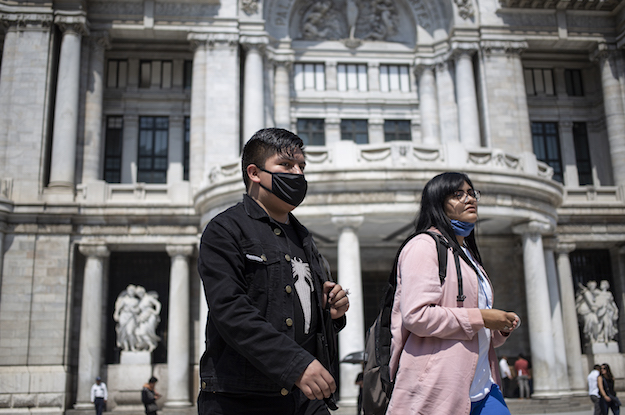Over the past 18 years, Rosalita García has nursed all 10 of her children back to health after bouts of malnutrition. But her three-year-old son’s recent hospital visit in Chiquimula, Guatemala has the 37-year-old mother more worried than usual. “I was able to feed my kids better before because it rained,” García told AQ. “But now we have nothing.”
Central America is in the middle of its worst drought in 30 years, threatening food security in countries that already suffer high levels of poverty and malnutrition. While the dry spell has been hard on everyone, it has placed a particularly heavy burden on women, for both economic and cultural reasons.
This is in part because of the way work is divided in small agricultural communities in much of the region. When crops fail, men often leave home to search for work, leaving women alone with their children for weeks or even months at a time. That can have a ripple effect on women’s and their children’s lives, said Alicia Ruiz, director of the food security program in the Guatemalan Health Ministry’s Chiquimula office.
“If something happens to the kids while the fathers are away, it’s the mother’s fault,” Ruiz told AQ. “It takes an enormous psychological, mental and physical toll on women. And girls usually have to help their mothers, which can take them out of school.”
The current drought, attributed mostly to the El Niño weather pattern, has severely affected harvests throughout the region’s so-called Dry Corridor, which runs mainly through Guatemala, Honduras, El Salvador and Nicaragua. As a result, more than 3.5 million people in Guatemala, El Salvador and Honduras alone need food assistance, and malnutrition has become an increasingly common problem throughout the region.
Before the current dry spell, Rosalita García and her husband, Izabel, were able to provide for their family through subsistence farming on their own land outside of Chiquimula. But they haven’t produced a full harvest of corn and beans from their small plot of land near the Honduran border in four years. And they’re not alone: More than 80 percent of small-scale farmers’ bean and corn harvests in Guatemala were destroyed last year. After several years of barely any rainfall, the partial or total loss of crops has become the new normal throughout the Dry Corridor.
In dry years in the past, families like García’s have counted on temporary aid from the government and nonprofit organizations to get by until the next harvest. But traditional food assistance and short-term work contracts are coming up short in the face of droughts that are longer and more intense than any in recent memory.
Increasingly, Rosalita notices the signs of malnutrition – swelling in hands and feet, dry skin and hair loss – in her children and is forced to make the hour-long trek to the health center for treatment. This is typical in Guatemala, where women are usually the parent that takes children to the hospital when ill, and health centers are often far from rural communities, according to Ruiz.
While the Ministry of Agriculture has rolled out various initiatives to help farmers adapt to drought conditions, the Ministry of Health has also become more involved. Its primary concern is treating acute malnutrition in children younger than five years old, but the ministry has also started promoting long-term measures to cope with a crisis that shows few signs of abating. As a result, the ministry has increased its resources dedicated to family planning and peer-to-peer health education, Ruiz told AQ.
Yet this highlights another problem facing women in the Dry Corridor: family planning often falls solely on their shoulders. Ruiz estimates that 99 percent of those that seek birth control at family planning centers in Chiquimula are women. Furthermore, there is a stigma surrounding contraception use. “The problem (with family planning) is that there is a lot of misinformation, taboo and machismo,” Ruiz said. Many men think that women only use contraception if they are cheating on their husbands. Consequently, there is a low demand for birth control, something that the Health Ministry is trying to change.
Still, as a result of sustained efforts by the Health Ministry – as well as a lack of other alternatives – many young couples have postponed plans to start a family altogether. “It would be nice to have children, but we would need enough (food) to be able to feed them,” a recently married subsistence farmer named Usiel Vásquez, 27, told AQ. “With the drought, it’s not easy to have a family that isn’t suffering from hunger.”
To fully address the systematic shortcomings of subsistence farming in Guatemala – a daunting task in a region with low literacy rates, high birthrates and cultural resistance to change – more must be done to help rural women. “Often state resources don’t focus directly on women,” said Ruiz. “We aren’t taking care of our mothers.”
—
Brigida is a freelance journalist who covers politics, immigration and human rights in Latin America. She has reported on Guatemala’s historic 2015 elections, violence against women in El Salvador and the Colombian conflict.








